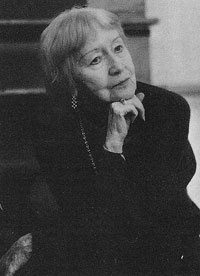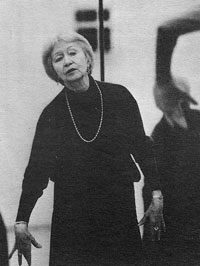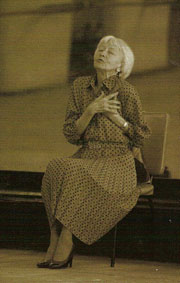Galina
Ulanova

Jury member of Benois de la Danse
Galina Ulanova was born in St. Petersburg in the family of ballet dancers. She became the first unique student of Agrippina Vaganova, at the Leningrad Ballet College. She darnced sn the l.ening!'cid"Kirov" and then. af the Moscow Bolshoi Theatre.
She was the first Juliet in the production of Romeo and Juliet” by Prokofiev who impressed the Western world during the Bolshoi Theatre tour of London in 1956. Then the English prima ballerina Dame Margot Fontain wrote about her: “It is magic. I shall not even try to say a word about Ulanova's dancing. It is so perfect that I have no words to describe it”.
Ulanova is the tutor of such stars of the Bolshoi as: Nina Timofeeva, Ekaterina Maximova, Vladimir Vasiliev, Liud-mila Semeniaka, Alia Mikhalchenko, Nina Semizorova and Nadezhda Gracheva. One of her pupils was the Tajik ballerina Malika Sabirova (who died too young), now National festivals are dedicated to her.
Behind these lines is great work, prizes, and titles. Ulanova has so many of them that it is difficult to enumerate: twice Hero of the Socialist Labour Party, People's Artist of the USSR, Laureate of I. enin and various State Prizes┘ Ulanova belongs to Russia and to the World. Albert Kann has taken more than 5000 photos of Ulanova, thus creating the biggest photo-history in existence. Ulanova s sculpture — The Swan (created by Yanson-Manizer) is placed in front of the Ballet Museum in Stokholm. Her native public greatly respects her.
Galina Ulanova is a genius of the Russian ballet; its evasive soul, its inspired poetry┘ in everything created by Ulanova you can feel her astute, inquisitive mind.
Sergei Prokofiev
Arnold Huskell calls Ulanova the magician of transformation, able to express deep emotional categories and fabrics of dance. He thinks that Ulanova has everything: incredible technique, though unnoticeable behind the free and smooth dance; brilliant intelligence and wonderful emotionalism.
Ulanova's creativity found its natural and beautiful extension in her students. But in ballet there still remains the art of her own. And it is not just a legend of the past, but a living ideal, which я inconceivable as of today я attracts the modemballet and influen-ces its evolution.
Nina Dorliak and Svyatoslav Richter
Gallery




